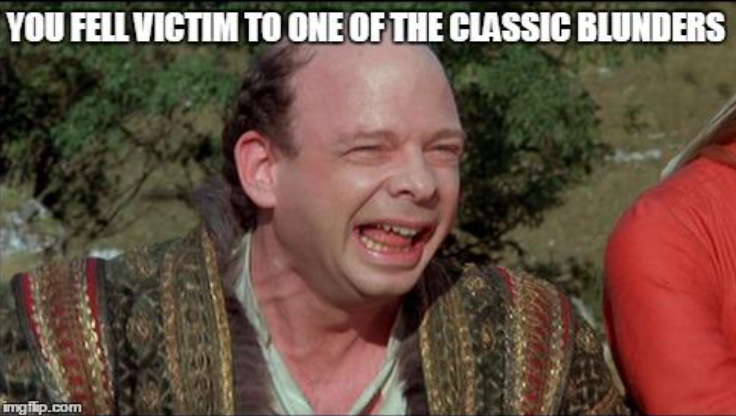Understanding 4-Point Inspections - Part 1
Live Photo of the Florida Homeowners Insurance Industry
The current Florida homeowner’s insurance industry is…… in a difficult situation (to say the least). Many recent news headlines are reporting a not-so-uncommon experience felt across the state as people are notified by their home insurance providers of either a significant increase in their premiums (sometimes as much as 50%!) or that they are going to be dropped all together. This news can leave the homeowner in a really sticky situation. Once the shock wears off, they will begin their journey in navigating through the process of obtaining a new home insurance policy.
It is here where you will likely come across the term “4-Point Inspection” – either for the first time, or the first time in a while. IF you spend your time living your life (and not studying the finer details of the Florida home insurance industry), you are not likely familiar with what a 4-Point Inspection exactly is, even if you kind of remember or have a hunch (A Classic Blunder!).
However, There is no reason to fear or panic. In this article we will clearly define what a 4-Point inspection is and what it is not, so you can have confidence when hiring a home inspector.
What Is a 4-Point Inspection?
To put it clearly - it is a building inspection that generates a report designed for your home insurance company, and the purpose of the inspection is to document and certify the condition of the roof, electric, plumbing, and HVAC systems of the home.
When documenting and certifying a property during the course of a 4-Point Inspection, the key word is “Acceptable Condition”. The Citizen’s 4-Point Inspection form defines “Acceptable Condition” as both; 1). working as intended AND 2). free of visible hazards or deficiencies. This is important, because this phrase and subsequent definition outlines the scope and limitations of this inspection. For the most part, this inspection is limited in scope to the roof, electric, plumbing, and HVAC systems – but it may also include other systems of the home if they are determined to be of significant hazard or deficiency. If you want to learn more about each of the 4 “Points”, you may be interested in reading the other parts in this serious or articles, Understanding 4-Point Inspections.
4-Point Inspections are almost always required on homes that are 20 years or older, however it has been our experience that more and more insurance companies are requesting 4-Point inspections of newer homes as well. Additionally, the report itself is typically “good” for 30-90 days from the date of the inspection but may also be “good” for up to a year – it all depends on the insurance company.
Once the 4-Point inspection is completed, it is very often everything the insurance company will need inspection-wise to underwrite the policy. However, it is also the case that the insurance company may want additional information on the home (or require less) or may hire their own inspector (either in lieu of or in addition to yours) – it all depends on the individual insurance company and their policies, procedures, and/or underwriting guidelines.
Regardless of your situation, even if you are sure you are going to need a 4-Point Inspection, we would highly recommend that you speak with your insurance agent or company before hiring an inspector. You may find that you don’t need an inspection at all, find you just need a Wind Mitigation Inspection (see our article on Wind Mitigation Inspections to learn more), or find you need something else entirely – Essentially, don’t waste your time or money on a service you don’t need.
What Is a 4-Point Inspection NOT?
Now that we have established what a 4-Point Inspection IS, it’s fairly easy to understand what it is NOT.
The biggest misconception I come across is that a 4-Point Inspection is an adequate substitute for a home inspection when buying or selling a home. It is important to understand that a 4-Point is limited in scope not only in what areas are inspected, but how thorough these areas are inspected and what types of information and recommendations are provided via the report. Many home inspections will also cover areas like the exterior structure and foundation, doors and windows, detailed information about the attic insulation and ventilation, and will inspect the appliances (just to name a few areas). Beyond that, the home inspection report you get will also be designed and written for your purposes and use (as opposed to the insurance agent-facing report that a 4-Point inspection will generate).
The next thing to understand is that a 4-Point Inspection that is satisfactory (“Acceptable Condition”) in all areas does not provide a guarantee of insurability. Unfortunately, an insurance companies’ underwriting guidelines may limit or exclude policies on homes that are built with certain materials, such as polybutylene plumbing pipes, cloth wiring, asbestos siding, or an old roof – even if there are no apparent significant hazards or deficiencies present (technically “Acceptable Condition”, but an insurance company may have an issue with its presence regardless). In such cases, it’s our opinion that the inspector should verbally comment on the presence of these materials to you as the client during or immediately after the inspection, so you know what to potentially expect. Don’t worry, it’s not time to panic yet - In the event your chosen insurance company decides that they are unable to provide insurance, you may find another option by shopping around. In most cases, you will be able to find another option for home insurance (even if it’s with a higher premium).
In Conclusion
It can be tough navigating the home insurance industry in Florida, but we hope this introductory article was able to provide you with some helpful information. If you have any further questions, concerns, or want to schedule a 4-Point Inspection in the Tampa Bay area, please feel free to contact us 727-267-8428 or info@havenhomeserv.com.
In Pursuit of Your Ultimate Peace of Mind,
Noah Hayden


